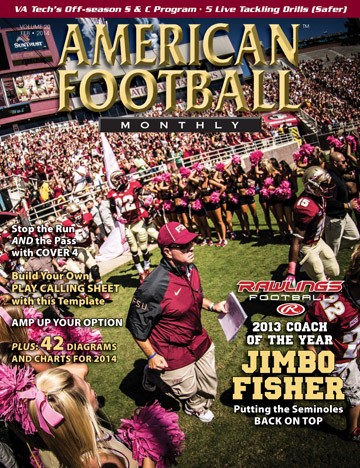Article CategoriesAFM Magazine
|
Rawlings Football College and High School Coaches of the Yearby: David Purdum© More from this issue It was a summer evening in the mid-1980’s. Volunteer workouts were revving up for the Salem University football team. Salem Quarterbacks Coach Terry Bowden pointed at his quarterback’s cleats and laughed. “His football shoes were covered in cow manure and hay,” Bowden recalled with a chuckle. Thirty years later, that quarterback with the stinky shoes is a national champion and Rawlings Football Coach of the Year, Florida State’s Jimbo Fisher. “Although he was the best at everything he did,” said Bowden of Fisher, who would become his longtime assistant at Samford and Auburn, “and he was the best on every team he played for in every sport, Jimbo was always going to try to outwork you. He’d show up at those workouts with those shoes, and we’d laugh. But we all knew he was coming straight from having worked ....The full article can only be seen by subscribers.
|
|
|||||||
| HOME |
MAGAZINE |
SUBSCRIBE | ONLINE COLUMNISTS | COACHING VIDEOS |
Copyright 2025, AmericanFootballMonthly.com
All Rights Reserved





